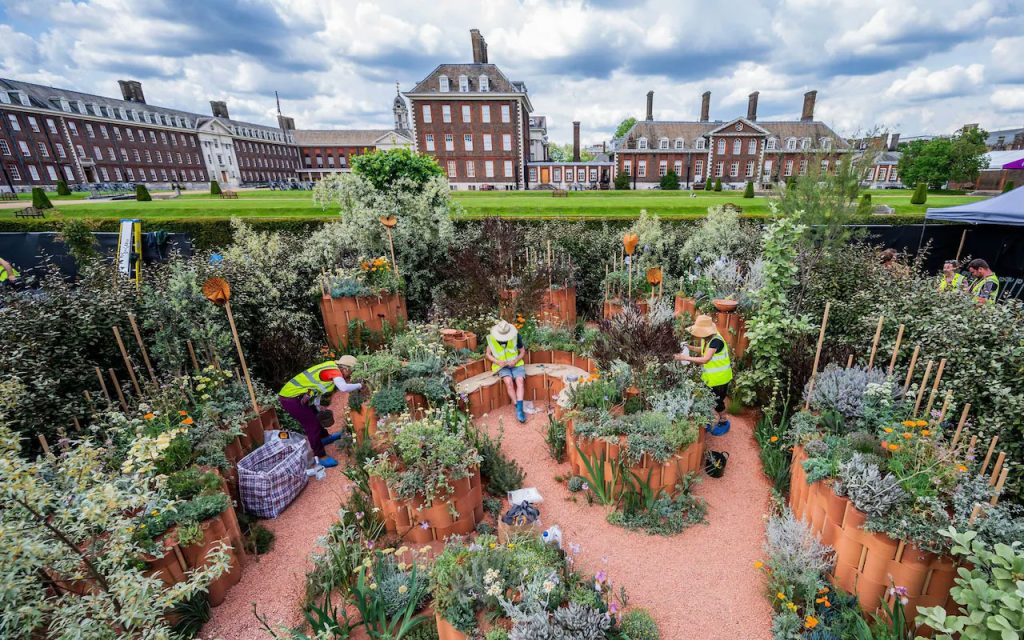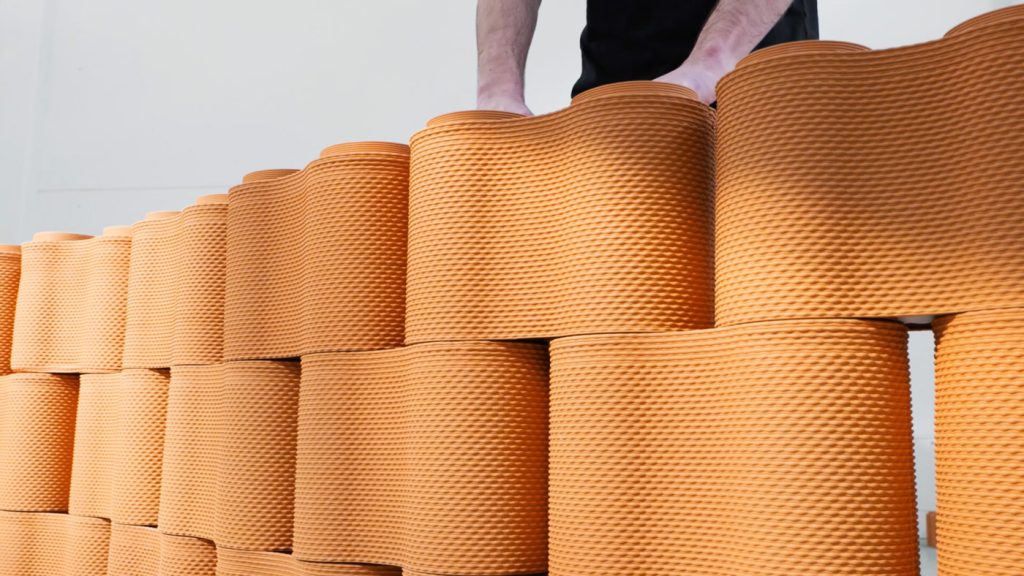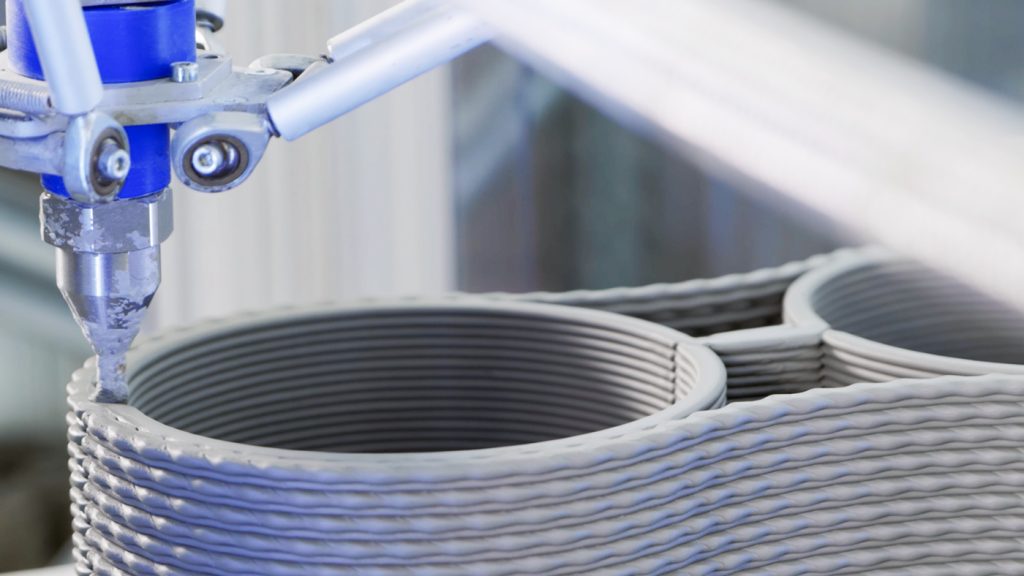3D printer manufacturer WASP recently partnered with landscape designer and gardener Giulio Giorgi to construct a sensory ceramic garden for the RHS Chelsea Flower Show 2024.
Taking place between 21-25 May, the annual flower show saw the 3D printing-enabled garden take center stage alongside a variety of themed outdoor spaces. Called the “World Child Cancer’s Nurturing Garden,” Giorgi and WASP’s entrance was produced in collaboration with the charity World Child Cancer UK and was funded by Project Giving Back.
The team’s use of ceramic 3D printing led to the garden receiving the inaugural RHS Environmental Innovation Award. WASP technology was used to replace concrete structures with 3D printed clay blocks which supported circular raised beds. The remainder of the garden was also constructed with low-carbon materials and without power tools.
“It was a really difficult decision to make but we felt the World Child Cancer Nurturing Garden stood out as a beautifully simple example of merging old techniques with new, where Giulio has used 3D printing to create traditional keyhole gardens,” stated Malcolm Anderson, RHS Head of Sustainability.
“The garden has been created using products made entirely from soil and timber and in its construction no power tools have been used, only hand tools, so it is a fine example of how we can design and build gardens more sustainably in the future.”

RHS Chelsea Flower Show showcases 3D printing
The World Child Cancer UK team sought to create a garden concept that could be adapted and replicated in different environments and climates. This would allow sensory outdoor spaces to be produced at hospitals where not-for-profit organizations operate, supporting the emotional well-being of children undergoing cancer treatment.
“What is a sensory garden? It’s a garden that lets children live in the moment and connect with nature while being treated at the hospital,” explained Giorgi. “Touching, smelling, tasting… those sensory experiences let them forget for a little while the hard time they’re living through.”
To achieve this goal, Giorgi worked with Giuseppe Fallacara of the Polytechnic University of Bari to design 3D printed terracotta modules which can be transported and rearranged to create customizable garden spaces. The ceramic blocks are stackable and can be used as planters or to form wall structures.
The environmentally friendly garden also included sustainable and peat-free soils, drought-resistant plants sourced from the UK, and a watering system which minimizes waste and doesn’t require electricity or water pressure.
According to Giorgi, the 3D printed ceramic units support plant roots by absorbing humidity and releasing moisture in dry conditions. Leftover material can also be crushed and recycled to form part of a garden path.

These 3D printed modules were produced by WASP. The company leveraged its clay 3D printing farm to fabricate over 600 units in under two months. WASP 40100 LDM ceramic 3D printers were utilized in this production effort.
According to the 3D printer manufacturer, the 40100’s automation features allow it to achieve 24/7 production, enabling large series production of ceramic parts with personalized designs.
WASP plans to make its 3D printed ceramic garden modules available to purchase from its official online shop.

3D printing sustainable structures
The architecture industry has witnessed increased adoption of additive manufacturing, particularly for the construction of eco-friendly structures.
Last year, 3D Printing Industry attended AM Summit Denmark 2023, Scandinavia’s largest annual 3D printing conference. This conference, which focused on the sustainability of 3D printing, introduced the I AM MSHRM project.
A collaboration between Danish AM Hub and Bjarke Ingels Group, this project has designed and 3D printed a donut-shaped, sustainable temporary structure. The structure’s frames were 3D printed using plastic waste, locally sourced sugarcane and cornstarch. These were then filled with mycelium, a naturally occurring fungi, to create the structure’s walls.
Designed to be built in sections, the 3D printed structure can be used as a rapidly deployable emergency shelter. According to Danish AM Hub’s CO2e calculator tool, I AM MSHRM reduced CO2 emissions by 80%, compared to conventional construction methods.
Elsewhere, Hassell, an international design studio, and venture capital, philanthropy, and creative space platform to.org announced plans for a 3D printed pavilion made of recycled plastic.
The prototype of the 3D printed building can be modified to suit various extreme climates and settings. Designed to serve as a space for meditation and education, the structure is the first in a broader scheme to 3D print several pavilions that encourage material waste conversations.
Want to help select the winners of the 2024 3D Printing Industry Awards? Join the Expert Committee today.
What does the future of 3D printing hold?
What near-term 3D printing trends have been highlighted by industry experts?
Subscribe to the 3D Printing Industry newsletter to keep up to date with the latest 3D printing news.
You can also follow us on Twitter, like our Facebook page, and subscribe to the 3D Printing Industry Youtube channel to access more exclusive content.
Featured image shows World Child Cancer UK’s Nurturing Garden at the RHS Chelsea Flower Show 2024. Photo via Guy Bell/Alamy.


